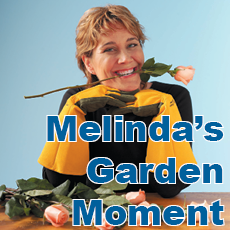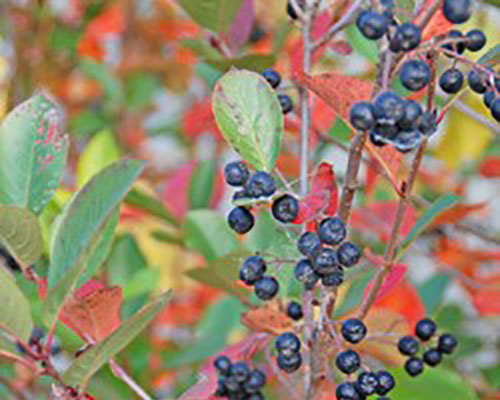
Melinda’s Garden Moments is heard Mon.-Fri. at 7:45 and 10:45 a.m. and 4:45 p.m. on 97.9 WHAV.
Though chokeberry is not an appetizing name, this four season beauty is making a big impact in edible and ornamental gardens.
Include this beauty in your landscape. Hardy in zones 3 to 9 it prefers full sun to part shade and tolerates moist and even wet soils. The white flowers appear in spring and glossy green leaves turn a beautiful crimson or purplish red in fall. The black fruit is edible and high in antioxidants and vitamin C. But nibble on just a berry or two as they are very tart and astringent. Or use the fruit for jams, baked goods and wine.
And if the flavor is a bit much for you, just wait and the birds will eventually feast on the fermented fruit in late winter.
Use these edible beauties as informal hedges, in mixed borders or rain gardens. Viking is a popular cultivar grown for its large black fruit and compact size.
A bit more Information: Chokeberries can be slow to establish, so be patient. The red chokeberry has similar flowers, fall color, but red fruit instead of black. Brilliant is an outstanding cultivar with waxy leaves, more fruit and excellent red fall color. Visit the Midwest Aronia Association’s website for recipes and more.
For more gardening tips, how-to videos, podcasts and more, visit www.melindamyers.com.

